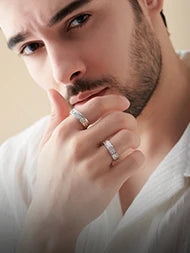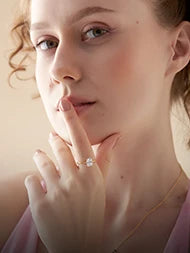When people think about buying a diamond ring, their attention naturally goes to the stone. Cut, clarity, and carat often steal the spotlight, but there’s one crucial detail that’s frequently overlooked: the setting. Just as important as the diamond itself, the right setting enhances its beauty, security, and overall impact.
A diamond’s setting doesn’t just hold it in place. It shapes your perception of it. It decides how much of it you see. And it plays a surprisingly big role in how the ring feels day to day.
Two of the most popular diamond settings, bezel and prong, offer very different experiences. So if you’re trying to figure out which one suits you better, here’s a closer look at what each brings to the table.
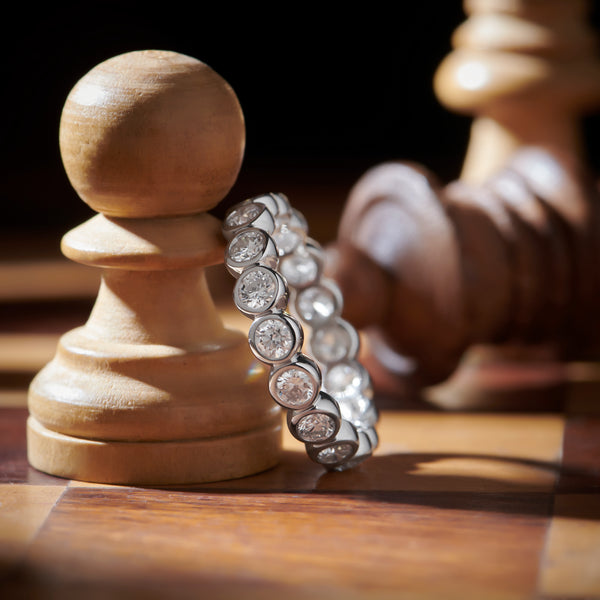
The Bezel Setting: A Jewelry That Holds Nothing Back (Except Snags)
Picture a smooth ring with a diamond framed all around by metal. That’s a Bezel Setting. The stone sits securely inside a rim, like it was made to live there, and in many ways, it was.
This type of setting has been around for centuries, but it still feels modern. Maybe it’s the clean lines. Or the fact that it doesn’t shout for attention, yet it feels solid, confident and shines through.
People often choose a Bezel Setting for not just aesthetic but practical reasons. The diamond is better protected; no sharp edges exposed, no risk of prongs catching on fabric. It’s the kind of ring you can wear to the gym or for a trek without thinking twice, especially if you’re active or constantly using your hands.
But there’s a trade-off. Because the stone is partially covered, it doesn’t reflect quite as much light. That means it won’t have the same sparkle as a diamond in a more open setting. If brilliance is your top priority, you might want to keep reading.
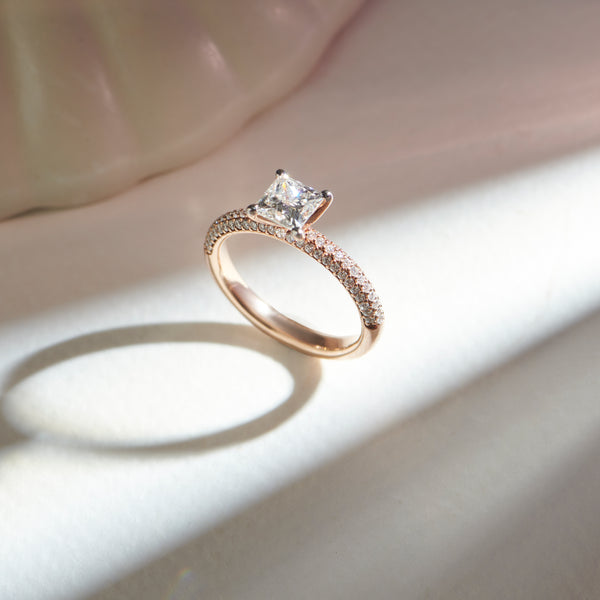
The Prong Setting: Classic, Bold, and Full of Light
Now imagine a diamond held up by tiny metal arms, usually four or six. That’s a prong setting. It’s what you’ll see on most traditional engagement rings. There’s a reason for that.
By lifting the stone and leaving most of it uncovered, the prongs allow more light to enter the diamond. More light means more sparkle. That’s what makes this setting so popular with people who want their stone to shine, literally.
It’s also lighter in look and feel. The focus stays on the diamond, not the metal around it. And because the prongs can vary in number, height, and shape, there’s room for a lot of personal expression, even within a classic style.
Of course, it’s not without its downsides. Prongs can loosen over time. They can snag on clothing, especially delicate fabrics. And because the diamond is more exposed, it needs a bit more care.
So, Which One’s Better?
That depends on what “better” means to you.
If you want something low-maintenance, secure, and with a clean, modern look, a bezel might be the way to go. It’s especially appealing to people who live an active lifestyle, or who prefer understated elegance over sparkle.
But if you love that traditional engagement ring look and if you want your diamond to catch light with every movement, prong settings are hard to beat. They’re timeless, elegant, and offer the kind of brilliance that turns heads.
Neither is wrong. It really comes down to how you live, what you value, and how you want your ring to feel, not just look.
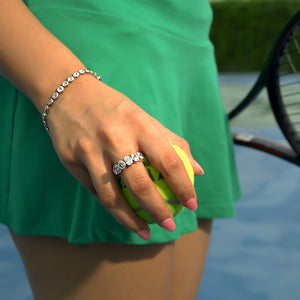
What About Comfort and Everyday Wear?
Bezel Settings tend to be smoother and keep a low profile. If you’re someone who’s always on the move, or if you wear gloves often, this matters more than you might think. There’s less risk of catching the ring on something or scratching the surface.
Prong Settings, especially higher ones, can feel a little more delicate. You’ll want to be mindful while doing physical work, and it’s a good idea to have them checked occasionally to make sure the prongs haven’t loosened.
Aesthetics: Soft Edges or Floating Stones?
Visually, bezels give off a softer, more sculptural vibe. The metal becomes part of the design in a very intentional way. Some people love the balance this creates, especially when paired with colored stones or unique band shapes.
Prongs, on the other hand, give the illusion of the diamond floating. They’re designed to disappear, to let the stone do the talking. If you’re after a look that centers the diamond and nothing else, prongs deliver.
Still Deciding? Think About This
- What’s your lifestyle like? (Are you active, hands-on, outdoorsy?)
- Do you prefer a statement piece or something subtle?
- How important is sparkle to you?
- Would you rather have a classic look or something slightly off the beaten path?
These aren’t just design choices. They’re part of how the ring fits into your life. And the right setting will feel like it belongs, not just on your hand, but in your story.
One Isn’t Better Than the Other. It’s Just More You
In the end, it’s not about bezel v/s prong. It’s about which one feels more aligned with who you are and how you want to wear your diamond.
If possible, try both. See how they look on your hand. See how they feel. You might be surprised by which one speaks to you.
And whatever you choose, let it be something you won’t second-guess. Not because it’s trendy. Not because someone told you to. But because you tried it on and thought, yes, that’s the one.
